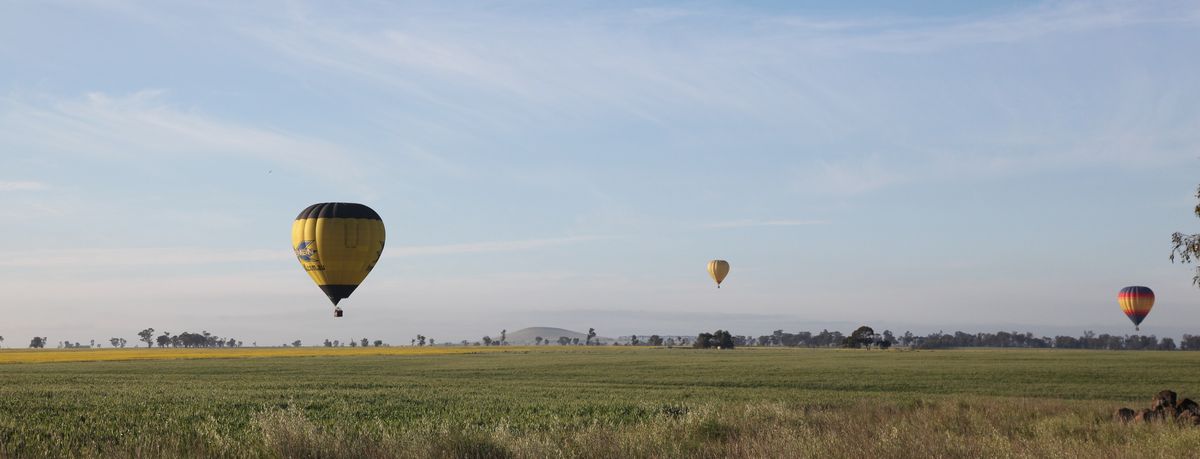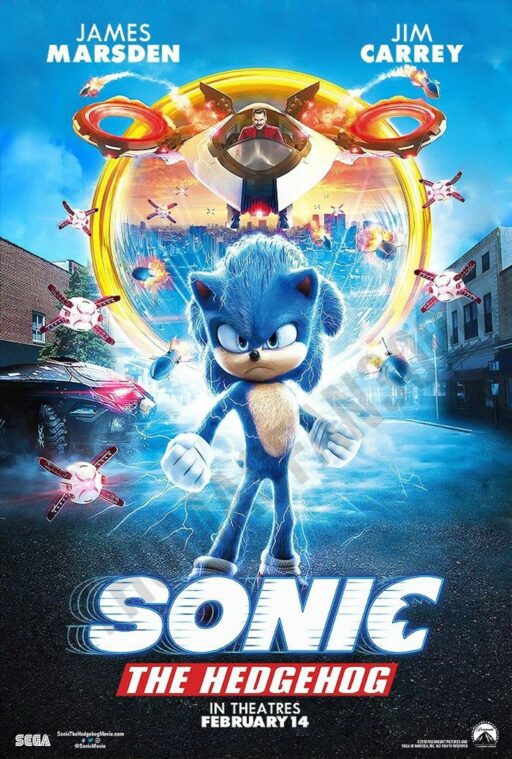Pixar’s ‘Up’ is more than just an animated film; it’s a poignant exploration of life’s emotional journey, encapsulating themes of love, loss, adventure, and companionship. Through the eyes of its elderly protagonist, Carl Fredricksen, audiences are taken on an unforgettable voyage that tugs at the heartstrings and inspires the soul. The movie’s rich narrative and visual splendor have cemented its place as a cultural icon, resonating with viewers of all ages. In this article, we delve into the multifaceted layers of ‘Up’ to uncover the emotional depths and artistic triumphs that make it a masterpiece of modern animation.
Key Takeaways
- Carl Fredricksen’s journey in ‘Up’ serves as a powerful narrative on coping with loss and the transformative power of fulfilling a promise.
- The companionship between Carl and the supporting characters highlights the importance of unlikely friendships and intergenerational bonds.
- Pixar’s ‘Up’ utilizes advanced animation techniques and poignant color palettes to convey the emotional states and growth of its characters.
- Themes of grief and resilience are central to ‘Up’, offering a universal message about the healing nature of adventure and new experiences.
- The cultural impact of ‘Up’ extends beyond entertainment, influencing storytelling in animation and resonating through its real-life inspirations and widespread acclaim.
Exploring the Depths of Carl’s Journey

The Backstory of Carl Fredricksen
The character of Carl Fredricksen is not just a figment of animation; he represents a tapestry of emotions and experiences that resonate with many. Carl’s journey begins with his youthful dreams of adventure, inspired by the famed explorer Charles Muntz. As a child, Carl is depicted as shy and reserved, but his encounter with the vivacious Ellie sets the course for his life’s ambitions.
- Childhood: Shy and reserved
- Meeting Ellie: A turning point
- Inspired by Charles Muntz: Dreams of adventure
The real-life backstory behind Carl’s house adds a layer of poignancy to the narrative, revealing a depth that extends beyond the screen. The house, a symbol of Carl’s love and promises to Ellie, becomes the vessel for his long-awaited journey.
The essence of Carl’s character is his unwavering commitment to Ellie and the promises they made together. It is this commitment that propels him to embark on the adventure of a lifetime, even in the twilight of his years.
Ellie’s Legacy and Carl’s Promise
Ellie’s legacy is a beacon that guides Carl’s actions throughout his journey. Her adventurous spirit and their shared dream of visiting Paradise Falls become the emotional compass for Carl, who is determined to fulfill the promise he made to her. His quest is not just a physical one, but a poignant endeavor to honor the life and wishes of his beloved wife.
- The shared dream of Paradise Falls
- Carl’s promise to Ellie
- The emotional compass guiding Carl
In the quiet moments, we see Carl’s introspection and the weight of his promise. It’s in these instances that the depth of his love and the pain of his loss are most palpable.
Carl’s commitment to Ellie’s memory is a testament to the enduring power of love. It propels him to overcome obstacles and, ultimately, opens his heart to new experiences and relationships. The journey to Paradise Falls becomes a metaphor for Carl’s internal voyage from mourning to acceptance.
The Emotional Rollercoaster of Adventure
Pixar’s ‘Up’ takes audiences on an emotional rollercoaster, masterfully weaving moments of joy, sorrow, excitement, and reflection. The journey of Carl Fredricksen is not just a physical one, but an emotional odyssey that resonates with viewers.
- The opening sequence sets the tone with a poignant exploration of love and loss.
- Carl’s reluctant partnership with Russell introduces humor and frustration.
- The thrilling escape from the villain Muntz adds suspense and action.
- Quiet moments of reflection bring a sense of peace and contemplation.
The adventure in ‘Up’ is a metaphor for life’s unpredictable nature and the emotions that come with it.
The film’s ability to connect with the audience is a testament to Pixar’s storytelling prowess. Pixar excels in creating emotional connections through relatable characters and memorable moments, ensuring that the story of Carl and his companions stays with us long after the credits roll.
The Significance of Companionship

Russell: An Unlikely Sidekick
In the heartwarming tale of ‘Up’, Russell’s character introduces a dynamic that is both humorous and poignant. As a Wilderness Explorer in pursuit of his final badge, Russell’s initial encounter with Carl seems to be nothing more than a chance meeting. However, as their journey progresses, it becomes clear that Russell’s presence is more than mere coincidence; it’s a catalyst for change in Carl’s life.
- Russell’s earnestness and determination to help Carl.
- His innocence brings a new perspective to Carl’s world.
- The bond that forms between them, despite their generational gap.
Their relationship, though fraught with the comedic mishaps of an odd couple, evolves into a deep and meaningful connection. This unlikely companionship not only enriches Carl’s adventure but also teaches him invaluable lessons about life, love, and letting go.
Dug and Kevin: More than Comic Relief
While Dug and Kevin initially serve as sources of humor in ‘Up’, their roles evolve to become integral to the film’s narrative and emotional depth. Dug’s unwavering loyalty and Kevin’s mysterious allure contribute significantly to the journey of self-discovery and healing for Carl.
- Dug, with his talking collar, provides not just laughs but also companionship to Carl, filling a void left by Ellie’s absence.
- Kevin, though a wild creature, brings out a nurturing side in Carl, reminding him of the adventures he once dreamed of with Ellie.
The duo’s contribution to the story goes beyond mere entertainment; they embody themes of friendship, acceptance, and the unexpected nature of life’s adventures. Their presence in the film underscores the idea that sometimes, the most profound connections come from the most unlikely places.
The characters of Dug and Kevin remind us that joy and companionship can be found in the most unexpected moments and that healing often comes with a touch of whimsy.
The Evolution of Relationships
In Pixar’s ‘Up’, the evolution of relationships is not just a subplot; it’s the heart of the narrative. The bond between Carl and Russell grows from reluctant companionship to a deep familial connection. This transformation mirrors the journey they undertake together, from the streets of their neighborhood to the wilds of South America.
- Initially, Carl sees Russell as an annoyance, a barrier to fulfilling his promise to Ellie.
- As challenges arise, they must rely on each other, revealing strengths and vulnerabilities.
- The shared experience of adventure fosters trust and mutual respect, culminating in a profound sense of belonging.
The beauty of ‘Up’ lies in its portrayal of how relationships can evolve over time, often in unexpected ways, and how they can fill the void left by loss.
The relationships in ‘Up’ extend beyond the human characters. Dug, the lovable dog, and Kevin, the exotic bird, add layers of companionship and highlight the film’s message that family can be found in the most unlikely places.
Visual Storytelling and Artistic Mastery

The Animation Techniques Behind ‘Up’
Pixar’s ‘Up’ is a testament to the studio’s commitment to innovation in animation. The film employed a blend of traditional animation techniques and cutting-edge technology to bring its characters and story to life. The meticulous attention to detail is evident in every frame, showcasing the artistry and technical prowess of the animators.
- Traditional hand-drawn storyboards were used to map out the narrative.
- Advanced computer-generated imagery (CGI) created the film’s stunning visuals.
- Rigging and modeling techniques gave characters their unique shapes and movements.
The seamless integration of different animation styles and processes is what sets ‘Up’ apart, creating a visually rich and emotionally resonant experience.
Understanding the various types of animation, including styles, genres, and techniques, is crucial to appreciating the depth of work that went into ‘Up’. The film’s animation team pushed the boundaries of what could be achieved, resulting in a movie that feels both timeless and innovative.
Color and Imagery as Emotional Cues
Pixar’s ‘Up’ masterfully utilizes color and imagery to evoke a spectrum of emotions, guiding the audience through Carl’s journey. The film’s palette transitions from muted tones during moments of sorrow to vibrant hues that signify joy and hope. This visual storytelling is not just aesthetic but a deliberate narrative device.
- Muted grays and blues often represent Carl’s loneliness and grief.
- Bright yellows and greens are used to symbolize moments of adventure and renewal.
- The iconic house with its myriad of balloons becomes a symbol of Carl’s promise to Ellie, with each color potentially representing a cherished memory.
The strategic use of color in ‘Up’ goes beyond mere decoration; it serves as a silent narrator, conveying the unsaid and accentuating the emotional weight of the story.
The juxtaposition of warm and cool colors creates a visual contrast that is not only pleasing to the eye but also reflective of the characters’ evolving emotions. As Carl’s heart warms to his new companions, the color palette shifts accordingly, illustrating the thawing of his once cold demeanor.
Setting the Scene: The World of ‘Up’
The world of ‘Up’ is a vibrant tapestry that combines the mundane with the magical, creating a backdrop that is both familiar and fantastical. The meticulous attention to detail in the settings grounds the story in a sense of reality, while also allowing for the extraordinary elements of adventure to seamlessly integrate into the narrative.
The real-life inspirations for the film’s locations add a layer of authenticity that resonates with audiences. For instance, the iconic floating house is not just a figment of imagination but echoes a true story. The real Up house, believed to be the inspiration behind the Pixar movie, belonged to Edith Macefield and was called Whitewood Cottage. This connection to a real-world counterpart adds depth to the film’s setting, making it more than just a visual spectacle.
The environments in ‘Up’ are not just static backgrounds; they are dynamic spaces that interact with the characters and contribute to their development. The world of ‘Up’ is as much a character in the film as Carl and Russell.
From the bustling cityscape to the untamed wilderness of South America, each location in ‘Up’ is meticulously crafted. The contrast between Carl’s orderly life and the chaotic beauty of the wilderness reflects his inner journey from loss to discovery.
Themes of Grief and Resilience

Dealing with Loss: A Universal Tale
The narrative of ‘Up’ masterfully captures the universality of grief, portraying it as an experience that transcends age, culture, and circumstance. The film’s protagonist, Carl Fredricksen, embodies the heartache and solitude that often accompany the loss of a loved one.
- Carl’s initial retreat into memories and isolation
- The gradual acceptance of loss as part of his journey
- The transformative power of new relationships and adventures
The journey through grief is not linear; it is a complex path marked by setbacks and small victories.
Pixar’s ‘Up’ not only delves into the emotional struggle but also illustrates the resilience of the human spirit. The companionship of Russell, Dug, and Kevin serves as a beacon of hope, guiding Carl towards a future where Ellie’s legacy continues to inspire.
Carl’s Transformation: From Grief to Acceptance
The journey of Carl Fredricksen in Pixar’s ‘Up’ is a poignant portrayal of how one navigates through the stages of grief and arrives at a place of acceptance. Carl’s transformation is a testament to the resilience of the human spirit, as he learns to let go of the past and embrace new adventures.
- Initially, Carl is depicted as a curmudgeonly old man, clinging to the memories of his late wife, Ellie.
- As the story unfolds, we witness Carl’s gradual opening up to the possibility of joy and companionship once again.
- The turning point comes when Carl decides to fulfill Ellie’s dream, symbolizing his acceptance of her loss and his readiness to move forward.
The emotional growth of Carl Fredricksen mirrors the journey many of us face in life, where letting go and moving on are essential steps in healing from loss.
Carl’s acceptance is not a moment of defeat but a courageous embrace of life’s endless possibilities. It is a powerful message that resonates with audiences, reminding us that it is never too late to find happiness and meaning, even after enduring the deepest of sorrows.
The Role of Adventure in Healing
In Pixar’s ‘Up’, the role of adventure serves as a catalyst for personal growth and healing. Adventure becomes a bridge between grief and acceptance, allowing Carl to navigate the tumultuous waters of loss. Through his journey, we witness the transformative power of embracing the unknown.
- The urn becomes a vessel not just for ashes, but for love, memory, and the transformative power of letting go.
- Unveiling family secrets leads to healing wounds, as seen in Carl’s revelations and newfound connections.
It is essential to consider both positive and negative experiences. This helps in identifying systems that consistently deliver good performance and those where improvement is needed.
The adventure in ‘Up’ is not just a physical journey, but an emotional one that underscores the importance of moving forward. Carl’s attachment to his home and the past is challenged, and through his travels, he learns to let go and make room for new memories and relationships.
The Cultural Impact of ‘Up’

Influence on Animated Storytelling
Pixar’s ‘Up’ has been a significant milestone in the cinematic evolution from the early days of silent films to the modern blockbusters we enjoy today. Its impact on animated storytelling is profound, as it demonstrates the medium’s ability to reflect societal changes and challenge perceptions. ‘Up’ is not just a film; it’s a cultural artifact that shapes our cultural discourse.
The influence of ‘Up’ on animation can be seen in various aspects:
- The nuanced portrayal of complex emotions in characters
- The seamless blend of humor and pathos
- The use of animation to tackle themes traditionally reserved for live-action cinema
The legacy of ‘Up’ is evident in how it has inspired animators and storytellers to push the boundaries of what can be conveyed through the art of animation. It has set a new benchmark for emotional depth and narrative sophistication in animated films.
Real-life Inspirations and Parallels
Pixar’s ‘Up’ not only takes viewers on a fantastical adventure but also grounds its narrative with elements inspired by the real world. The character of Charles Muntz, the antagonist, is notably drawn from a darker chapter of animation history. Muntz’s obsession with proving himself through the discovery of a rare species echoes the ambitions and sometimes unscrupulous actions of historical figures in exploration and science.
While the film’s villain may have roots in reality, the story of Carl and Ellie Fredricksen is a touching reminder of the enduring nature of love and dreams. Their life together, though never explicitly tied to a real couple, resonates with anyone who has experienced deep affection and shared aspirations. The film’s ability to parallel real-life emotions and relationships is a testament to its narrative depth.
The essence of ‘Up’ lies in its universal themes that mirror our own experiences. The journey of its characters not only entertains but also reflects the complexities of life, love, and ambition.
Legacy and Reception of the Film
The legacy of ‘Up’ is as uplifting as its storyline. The film not only received critical acclaim but also resonated deeply with audiences around the globe. It became a cultural touchstone, influencing not just animated storytelling, but also the way stories are told across mediums.
- ‘Up’ garnered numerous awards, including the Academy Award for Best Animated Feature.
- It has been praised for its emotional depth and the mature themes it tackles.
- The movie’s influence extends into real-life, inspiring people to chase their dreams and adventures.
The impact of ‘Up’ is evident in its enduring popularity and the heartfelt connections it has fostered among viewers of all ages.
The reception of ‘Up’ was overwhelmingly positive, with its box office success reflecting the movie’s ability to capture the hearts of many. Its legacy continues to soar as new generations discover the charm and lessons nestled within this Pixar masterpiece.
Conclusion
In the tapestry of animated storytelling, Pixar’s ‘Up’ stands out as a poignant exploration of life’s emotional spectrum. From the heart-wrenching opening sequence to the uplifting resolution, ‘Up’ takes viewers on a journey that transcends age and time. It reminds us that adventure and discovery are not confined to the young or the physically able, but are accessible to anyone who dares to dream and hold onto hope. As we’ve delved into the narrative depths and artistic heights of this cinematic masterpiece, it’s clear that ‘Up’ is not just a tale of adventure, but a profound commentary on love, loss, and the indomitable human spirit. It encourages us to cherish our relationships and to pursue our passions, no matter where they may lead us. In conclusion, ‘Up’ is a testament to the power of animation to evoke deep emotional responses and to tell stories that resonate with us all, long after the credits roll.
Frequently Asked Questions
What is the central theme of Pixar’s ‘Up’ movie?
The central theme of ‘Up’ revolves around the concepts of adventure, dealing with loss, and the importance of companionship.
How does Carl Fredricksen’s character develop throughout the movie?
Carl transforms from a grieving widower into an adventurous and caring father-figure, learning to cope with his loss and embrace new relationships.
Who are the main companions Carl encounters on his journey?
Carl is accompanied by Russell, an enthusiastic Wilderness Explorer, Dug, a lovable dog with a special collar that allows him to speak, and Kevin, a rare bird.
What role does the house with balloons symbolize in ‘Up’?
The house with balloons symbolizes Carl’s attachment to his past life with Ellie and his reluctance to let go, eventually becoming a metaphor for his journey of emotional release and moving forward.
How does ‘Up’ address the theme of grief and resilience?
The film portrays grief as a universal experience and follows Carl’s path to resilience as he learns to navigate life’s challenges and find joy in new adventures.
What impact did ‘Up’ have on animated storytelling and culture?
Pixar’s ‘Up’ is celebrated for its emotional depth, innovative animation, and storytelling, influencing subsequent animated films and resonating with audiences of all ages, making it a cultural landmark.






